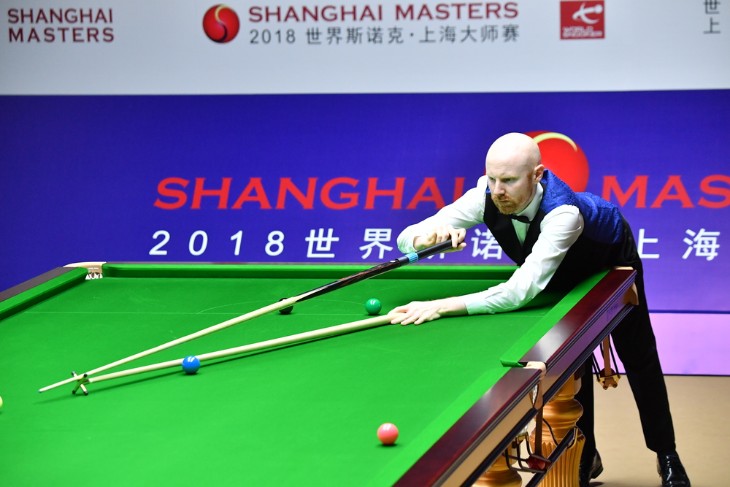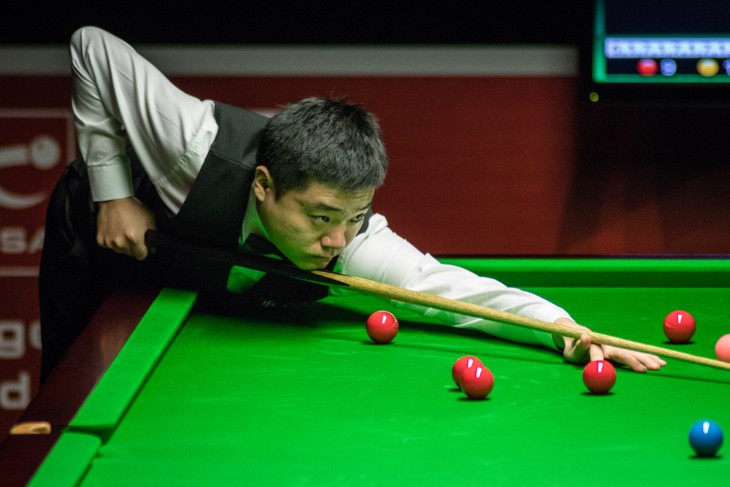Snooker, a game rich in strategy and skill, presents a variety of interesting rules. One such rule, known as the "free ball," often changes the direction of a game. Understanding what a free ball is in snooker is key for players and fans alike.
The concept of a free ball in snooker comes into play under specific conditions during a match. It happens when a player commits a foul and leaves their opponent in a tricky spot, unable to hit both sides of the balls they are supposed to target.
In simple terms, a free ball in snooker is a lifeline, turning a tough situation into an opportunity. It allows players to demonstrate their skill and tactical thinking.
This rule is not just about getting more points; it's about making smart moves and handling the game's ups and downs.
Here’s what you need to know more:
The Basics of a Free Ball in Snooker
Understanding the free ball rule is crucial in snooker. It's a rule that can change the game when a player is in a tough spot. Let's break it down into simple terms.
A free ball situation arises after a player makes a mistake, known as a foul. This foul leaves the other player unable to hit the ball they're supposed to. In snooker, you usually need to hit a specific ball next. If you can't hit this ball on both sides because of where the other balls are, that's where the free ball rule comes in.
The referee plays a big part here. They are the ones who decide if a free ball should be called. Once they call it, the player who was at a disadvantage gets a chance to turn things around. They can pick any other ball on the table and treat it as the ball they were supposed to hit. This is what we call nominating a free ball.
Here's how it helps: let's say you needed to hit a red ball, but you can't because it's blocked. The referee calls a free ball. Now, you can choose a different ball, like a blue one, and pretend it's the red ball for your next shot. Hitting this blue ball correctly scores you points, just as if it were the red ball.
Remember, the free ball only counts for that one shot. After that, the game goes back to normal, and you have to hit the balls in their usual order. The free ball rule is a chance to score and change how the balls are set up on the table. It's a moment in the game that can shake things up.
When is a Free Ball Called in Snooker?
Knowing when a free ball is called in snooker is key to understanding the game. Let's look at this rule in simple terms.
A free ball is called after a player commits a foul. A foul in snooker is a mistake, like hitting the wrong ball first. When this happens, and the next player can't hit both sides of the ball they're meant to, we have a situation for a free ball. It's the referee's job to decide if the conditions are right for a free ball.
Here's an example: Imagine it's your turn, and you need to hit a red ball. But, because of where the balls are after your opponent's foul, you can't hit any red ball properly. This is when the referee steps in and declares a free ball.
The timing of a free ball is crucial. It can only be called right after a foul when the incoming player is at the table. It's not just about being unable to hit the target ball; it's about not being able to hit it on both sides. This rule stops players from being unfairly stuck after their opponent's mistake.
A free ball is not just about getting out of a tight spot. It's a chance to score points and maybe even take the lead. For example, if you were behind in points, a free ball could help you catch up.

The Strategic Importance of Free Balls in Snooker
Free balls in snooker are more than just a rule. They play a big part in the game's strategy. Let's explore why they are so important.
When a player gets a free ball, it's a big chance. It can turn the game around. This happens because the player can choose a different ball to hit. This choice is not just about getting points. It's about thinking ahead and planning your next moves.
For example, you get a free ball and choose a yellow ball. You hit it, and now you have a better position on the table. This can help you hit more balls and score more points. The free ball has given you a chance to change the game in your favour.
Good players use free balls to their advantage. They think about which ball to choose and how it will help them in the long run. They also think about how it can make things tough for their opponent. A free ball can break the opponent's rhythm and give the player using it a psychological edge.
Remember, free balls don't happen all the time. So when they do, they are a special opportunity. Players must be smart and quick in deciding how to use them. This is where skill and strategy come into play.
Scoring and Rules Around Free Balls
In snooker, understanding how scoring works with free balls is key. Let's break down the rules and how they affect scoring.
First, when a player gets a free ball, they can choose another ball to hit. This chosen ball acts like the ball they were supposed to hit. For scoring, it's important to know that the chosen ball only counts as the original ball's points. For example, if you were supposed to hit a red ball (worth one point) but choose a blue ball (normally worth five points) as your free ball, hitting the blue will only give you one point.
The free ball rule also has some limits. You can't use the free ball to make a combination shot. This means you can't hit the free ball to knock in another ball. Also, if you pot the free ball and the original target ball in the same shot, only the free ball counts for points.
This rule adds a twist to the game. It lets players keep their turn going, which can lead to more points. But they need to be smart about which ball they choose as their free ball. The right choice can make a big difference in their score.
Restrictions and Considerations in Free Ball Situations
In snooker, while free balls offer advantages, they come with their own rules. It's important to understand these restrictions and considerations.
Firstly, when you choose a free ball, you must pot it directly. This means you can't use the free ball to knock in another ball. This rule is important because it keeps the game fair. It stops players from using the free ball to make easy combination shots.
Also, you need to remember that if you pot the free ball and the actual 'on' ball in the same shot, you only get points for the free ball. This stops players from getting extra points they didn't earn. It's a way to make sure the game stays balanced.
Another thing to think about is how choosing a free ball can affect the game. The right choice can help you score more points and put the balls in a better position for your next shots. But a wrong choice might not help you much. It's not just about potting the ball; it's about thinking ahead.
How Free Balls Affect the Flow of the Game
Free balls in snooker can change how a game goes. They bring a unique twist to the table. Let's look at how they affect the game's flow.
When a free ball is called, it can shift the momentum. Imagine one player is leading and controlling the game. Then their opponent gets a free ball. This can break the leading player's rhythm. The player with the free ball now has a chance to score and change the game's direction.
Free balls can also affect players' strategies. A player might be playing defensively, but a free ball can give them a chance to go on the attack. This switch in strategy can surprise the other player. It keeps the game exciting and unpredictable.
Another important point is the psychological effect. Getting a free ball can boost a player's confidence. It can also put pressure on the other player. This mental aspect is a big part of snooker. Players need to stay focused and make the most of every chance they get.
The Role of the Referee in Free Ball Situations
The referee in snooker plays a crucial role, especially when it comes to free-ball situations. Let's understand their role in simple terms.
When a free ball might be on the table, it's the referee's job to decide. They are like the game's umpire. The referee has to watch the game closely and make fair calls. They have to see if a player can't hit both sides of the ball they are meant to.
This decision can be a bit tricky sometimes because it's not always clear. The referee has to be sure before they declare a free ball. They have to be fair to both players and make the right call.
Once the referee calls a free ball, the game changes. It's their decision that makes it happen. They are like the boss of the game at that moment.

Famous Instances of Free Balls in Professional Snooker
In the world of professional snooker, there have been several memorable moments involving the free ball rule that have left fans on the edge of their seats.
One such moment dates back to 1985 when Steve Davis faced Dennis Taylor in the World Championship final. Davis, trailing by eight points with only the black ball remaining, potted the black along with the cue ball, leaving Taylor with a free ball opportunity. Taylor's decision to nominate the black as a free ball and pot it in a single dramatic shot secured him the championship.
Another snooker legend, Ronnie O'Sullivan, has strategically used the free ball rule to his advantage on numerous occasions. He's known for choosing high-value balls like the pink or black as free balls, allowing him to score heavily in a single stroke.
In 2014, during a tense match, Mark Selby placed Ronnie O'Sullivan in a challenging position. O'Sullivan's strategic response was to nominate the pink as a free ball, which enabled him to clear the table and showcase the rule's tactical depth.
Similarly, in 2011, John Higgins employed the free ball rule to great effect against Judd Trump in the World Championship final. His astute choice of a free ball played a pivotal role in securing a crucial frame.
These instances exemplify how the free ball rule can create thrilling and strategic moments in professional snooker. It's not merely about potting balls but also about making intelligent decisions that can lead to victory. Understanding these moments adds an extra layer of excitement to the sport for both players and fans alike.
Learning and Mastering the Free Ball Rule
Mastering the free ball rule in snooker is a crucial skill for those looking to excel in the game. To learn and become proficient in using this rule effectively, start by understanding its basics. Know that it comes into play after a foul, allowing you to select a different ball to act as the one you were supposed to hit.
Practice is essential, so create scenarios where a free ball might be called and practice your decision-making. Watching professional matches and observing how top players strategically use the rule can provide valuable insights. Online tutorials and videos can further aid your understanding.
Playing against experienced opponents can also be a valuable learning experience, as they can guide you in making the right choices. Additionally, focus on developing your tactical thinking and maintaining composure in high-pressure moments.
Review your games to assess your progress and refine your decision-making. In summary, mastering the free ball rule requires understanding, practice, and strategic thinking, enabling you to use it to your advantage in snooker.
Final Verdict
The free ball rule is a fundamental aspect of snooker, adding layers of strategy, skill, and excitement to the game. Whether you're a seasoned player or new to the sport, appreciating the nuances of the free ball rule is essential to understanding the depth and complexity of snooker.
It's a rule that embodies the tactical brilliance and precision that snooker is renowned for, making the game not just a test of skill but a battle of wits as well.
The free ball rule isn't just about potting balls; it's about making smart decisions under pressure, planning, and seizing opportunities.
It can shift the momentum of a match, change players' strategies, and even affect their mental states. From famous instances in professional snooker to learning and mastering the rule, it's evident that the free ball is a game-changer.
For more information:
[promotion:1150]






 (1).webp)






.webp)














